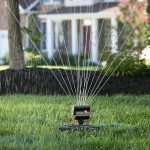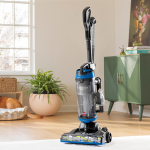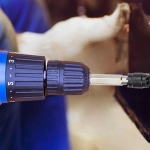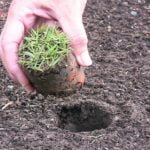Mowing a lawn professionally is an art that transcends simply cutting grass; it is a meticulous process that promotes the health of your turf, enhances its aesthetic appeal, and ensures long-term vitality. By adhering to a few key principles and techniques, you can transform your lawn from ordinary to exceptional, giving it the clean, manicured look of a professional-grade landscape.
Equipment Preparation and Selection
The foundation of any professional mowing job is the quality and condition of your tools. A well-maintained mower is essential for a superior result.
Choosing the Right Mower: Selecting the right lawn mower for your lawn is the first critical step. Rotary mowers are the most common and versatile choice for general residential use, providing effective cutting for most lawn types. For those seeking a very short, manicured finish, similar to a golf course, a reel mower is the ideal tool, as it uses a scissor-like action to deliver an exceptionally clean cut. For larger properties or lawns with uneven terrain and slopes, a self-propelled model can significantly reduce physical strain and improve efficiency.
The Importance of Sharp Blades: A professional cannot work with dull tools. Sharp blades are crucial as they make a clean, precise cut, which helps the grass heal quickly and look vibrant. Dull blades, on the other hand, tear the grass, leaving ragged, brown ends that are susceptible to disease and pest infestation. It is recommended to have your blades sharpened at least once per season, or more frequently if you have a large lawn or mow often.
Fuel and Maintenance: Before each use, it is a professional practice to perform a quick check of your equipment. For gas-powered mowers, ensure that the fuel and oil levels are adequate. For electric or battery-powered models, verify that the batteries are fully charged or that the power cord is in good condition. Additionally, regularly cleaning the underside of the mower deck prevents the buildup of grass clippings, which can impede blade performance and lead to an uneven cut.
Optimal Mowing Height and Frequency
The health of your lawn is directly tied to how you manage its height and the frequency of your mowing sessions.
The One-Third Rule: The most fundamental principle of professional lawn care is the one-third rule. Never remove more than one-third of the grass blade’s total height in a single mowing session. This practice prevents the grass from going into shock, which can result in browning, root damage, and an increased susceptibility to stress. Adhering to this rule ensures that the grass remains lush and green.
Mowing Frequency: The ideal cutting height varies by grass type and season. For most cool-season grasses (like fescue or bluegrass), a height of 2.5 to 3 inches is recommended. Warm-season grasses (such as Bermuda grass) can be cut slightly shorter. Mowing frequently enough to adhere to the one-third rule, often every 4 to 7 days during peak growing season, is key to maintaining a healthy, robust lawn.
Mowing Patterns and Techniques
The visual impact of a professionally mowed lawn comes from the precision of its patterns and techniques.
Varying Your Pattern: To achieve a uniform and healthy lawn, avoid mowing in the same direction every single time. Consistently pushing grass blades in one direction can cause them to lean over time and create ruts. By alternating your mowing pattern each week—for example, mowing vertically one week and horizontally the next—you encourage the grass to grow upright and ensure a more even cut.
Creating Stripes: For a classic, striped effect, a professional technique is to use a roller or a mower with a heavy rear wheel. The stripes are an optical illusion created by bending the grass blades in opposite directions, causing them to reflect light differently. To achieve this, mow overlapping passes in perfectly straight lines, then turn and mow the next pass in the opposite direction.
Overlapping Passes: To guarantee a perfectly uniform cut without any missed strips of grass, always overlap each pass by a few inches. This simple yet crucial technique prevents the unsightly “zebra stripes” that can appear with inconsistent mowing.
Dealing with Clippings and Lawn Health
How you manage grass clippings after the cut is just as important as the mow itself.
Mulching vs. Bagging: For a healthier lawn, professionals highly recommend mulching your grass clippings whenever possible. Mulching returns essential nutrients to the soil, acting as a natural fertilizer and promoting a stronger, greener lawn. You should only bag clippings when the grass is excessively long, wet, or when you are dealing with diseased grass, as thick layers of clippings can smother the lawn and cause problems.
Additional Lawn Care: Mowing is only one component of a healthy lawn. For a truly professional result, ensure your lawn is receiving adequate water, ideally through deep and infrequent watering sessions. Proper fertilization is also a critical practice that supports the lawn’s health and resilience against environmental stressors.
Post-Mowing Care and Safety Precautions
The job is not complete until you’ve finished with a professional’s attention to detail and a commitment to safety.
Final Touches: After the mowing is done, a professional will use a blower or broom to clear any grass clippings from sidewalks, patios, and driveways. This final touch gives the landscape a polished, tidy appearance that sets it apart.
Safety First: Always prioritize safety. Wear appropriate personal protective equipment (PPE), including sturdy closed-toe shoes, safety glasses, and hearing protection. Never attempt to clear a clogged deck or make adjustments with the engine or blades running. Always wait until all moving parts have come to a complete stop before touching them.
By integrating these professional mowing techniques into your routine, you will not only achieve a beautifully manicured lawn but also contribute to its long-term health and vitality. A little extra effort and attention to detail go a long way in creating a lawn you can be proud of.
Final Thoughts
Mowing a lawn like a pro is more than just a chore; it’s a skill that combines the right tools, smart techniques, and an understanding of what your grass needs. By following these principles—like adhering to the one-third rule, keeping your blades sharp, and varying your mowing pattern—you’re not just cutting grass, you’re actively promoting the health and beauty of your lawn.
Remember, a little extra attention to detail goes a long way. The result is a lawn that not only looks fantastic but is also more resilient and vibrant. If you’d like to explore any of these points further, perhaps we could talk about the best type of fertilizer for your lawn or how to deal with specific weeds.
Amranul is a highly experienced product review writer with a passion for helping readers make smart, informed purchasing decisions. Since 2018, he has specialized in thoroughly researching and analyzing a wide range of products to deliver honest, in-depth reviews. Amranul combines technical accuracy with clear, engaging writing to break down complex product features and highlight true user value. Look for his reviews to find reliable information and expert insights you can trust before you buy!





